Piecing together your Retirement Income
May 7, 2023
Most Canadians' primary concern regarding our retirement is ensuring we will have enough funds to sustain our desired lifestyle for as long as we are able-bodied, and to cover any costs along the way. Retirees can expect income from various sources, and the amount will vary given your savings, CPP contributions, pension plans through your employer, and many other potential sources given your situation.
In this article we’ll look at the most common sources of income in your retirement years:
Government benefits
- Canada Pension Plan (CPP). Chances are you have been contributing to CPP through your employment for years now. You can obtain a copy of your CPP contributions online through My CRA and use this figure to estimate your CPP in retirement.

- Old-Age Security (OAS). If your income is below $129,757 (as of May, 2023, this amount changes regularly -- Check with CRA), you will receive an addition to your CPP known as OAS. OAS is income-tested, so once your income goes above $79,845 NET (as of May 2023), you will have to repay some of your benefit.
- Guaranteed Income Supplement (GIS). This is a similar program to OAS, but is designed for very low-income seniors. You will only receive the GIS if your income is below $20,952 as a single person (the threshold amounts are higher for couples, depending on who receives OAS and how much).
Specific retirement savings
- Registered Retirement Savings Plans or Registered Retirement Income Funds (RRSP/RRIF). The bread & butter for most Canadians retirement income in the coming decades will be their RRSP savings. The amount you put into an RRSP is not taxed in the year it was earned (this is why we get RRSP receipts, to deduct the amount from your employment income or T4). Withdrawals from RRSPs and RRIFs are included in your income tax calculation and RRIFs have a minimum required withdrawal, calculated based on your age and the balance of the account on January 1st. (Your RRSP must be converted to a RRIF by age 71 but your 1st payout can be deferred to age 72).
- Locked-In Retirement Account or Life Income Fund (LIRA/LIF). Most “locked” RRSPs or LIRAs are former pensions whose commuted value has been transferred to another financial institution. Locked plans are designed to only be used as retirement income and withdrawals are restricted until you turn 55 (in comparison, RRSP withdrawals can happen any time). When you do take income, it is taxed the same as RRIFs above, there is a minimum annual withdrawal requirement, and, unique to locked plans, there is also a maximum annual amount which is also based on age, the plan’s province of jurisdiction (not your province of residence) and the account balance.
- Workplace Pensions. While pension plans are becoming less popular (in favour of group RRSPs instead in many cases), places like the federal government, including military, and the healthcare industry still use classic pensions. The two main types of pensions are Defined-Benefit (DB) and Defined-Contribution (DC):
- Defined-Benefit pensions, as the name suggests, provide a set payment considering variables like how long you worked for the company and your salary. The pension administrator is responsible for how the capital that funds these payments is invested.
- Defined-Contribution pensions are built via contributions from both employers and employees, and your final payment at retirement will depend on how much has been saved and how the underlying investment (which you control) performs.
Other money savings vehicles
While the above examples are retirement-specific, any savings account can technically be used for retirement:
- Non-registered savings accounts. Your chequing account, even, is a non-registered account, earning interest. You can also have non-registered mutual funds, segregated funds, etc. In general, money earned (or capital gains) are taxable in the year of the withdrawal from these types of accounts.
- Tax-Free Savings Accounts (TFSAs). Payments from TFSAs are tax-free (as there is no tax deduction when you invest the money, nor capital gains) so they can be an excellent complement to your taxable income when planning your cash flow, for either recurring expenses or one-time purchases like vacations.
Passive income
Some income sources may be funded by other investments (such as real estate, stocks, and mutual funds).
- Rental Income. Some people choose to rent their house after downsizing rather than selling, or investing in a 2nd rental property, which can be one way to secure a monthly income.
- Stock Dividends / TSWP mutual funds. Certain types of investments pay dividends or distributions that can provide income as well. Some mutual funds companies offer a “T series” version of their funds, from which you receive your capital back in monthly increments in a tax-efficient manner, deferring gains until your capital has run out (which takes many years).
Use Income-Planning Software
Your investment advisor has the tools available to put your retirement plan on paper, giving you peace of mind knowing you have a plan in place. We have various software applications that consider your assets, liabilities, investments, pensions, etc., and map out what your retirement income will look like from the moment you retire onward.
This is not an exhaustive list of possible retirement income sources, but these are some of the most common.
The federal government has a calculator you can use to get a basic understanding of your income after retirement. An advisor can then help you optimize your income sources, identify any potential estate issues, and plan to draw down investments in the most tax-efficient manner.
The comments contained herein are a general discussion of certain issues intended as general information only and should not be relied upon as tax or legal advice. Please obtain independent professional advice, in the context of your particular circumstances. This Blog was written, designed, and produced by Natalie LeBlanc & David Moore, PFP, STI for the benefit of David Moore, PFP, STI who is an Investment Fund Advisor registered with Investia and does not necessarily reflect the opinion of Investia Financial Services Inc. The information contained in this article comes from sources we believe are reliable, but we cannot guarantee its accuracy or reliability. The opinions expressed are based on an analysis and interpretation dating from the date of publication and are subject to change without notice. Furthermore, they do not constitute an offer or solicitation to buy or sell any securities. Mutual Funds, approved exempt market products, and/or exchange-traded funds are offered through Investia Financial Services Inc.





